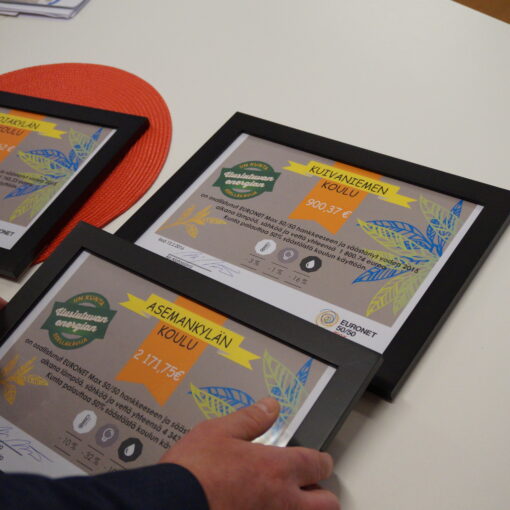The number of travelers in Lapland is growing year by year and an increasing number of tourists come from Asia. It has been noticed that the Asian people often eat in the destination’s Asian-style restaurants. In order to make the Lappish raw materials available to as many people in Lapland as possible, it is also advisable to provide local raw materials in Asian-style restaurants in Northern Finland. This can also help to promote the sale of local food products to tourists.
The Lapland University of Applied Sciences has had two projects to promote the use of under-utilized parts of fish and reindeer farming as food. Normally, under-utilized parts of fish and reindeer farming, that are fully suitable for human nutrition, have ended up as animal feed (reindeer) and buried in the ground (most of the by-catch of fishing). A year-long project funded by SITRA “The fish and reindeer farming into the circular economy” ended in February 2019. In addition to the Lapland UAS, Kemi’s Digipolis and VTT were involved in the project. The project investigated the amounts of fish and reindeer farming flows and distribution in the Lapland region. In addition, possible uses for under-utilized fish species and reindeer parts were investigated. During the project the interest of Asian-style restaurants to use under-utilized fish and reindeer as raw material in their kitchens emerged.

The ERDF-funded ‘Side Flows for Food – Lapland Reindeer and Fish for Asian Restaurants’ project, which began in February 2019, continues the same theme. There are over ten producers and Asian-style restaurants. The project will continue to explore the potential of Asian-style restaurants to utilize under-utilized raw materials, as well as to conduct product development experiments and for instance Chinese processing material.
The second project is still in its infancy, but it can already be estimated that the Asian-style restaurants in Rovaniemi alone will use 3-4 tonnes of previously lost shell and crayfish and several hundred kilograms of reindeer previously used for animal feeding or buried.
Project Manager Petri Muje, Lapland University of Applied Sciences
Finding a new user group for raw material reduces the amount of food waste and increases resource efficiency and supports the circular economy. The primary producer receives additional income and restaurants can reduce the need for foreign raw materials by using local raw materials. This simplifies logistics chains and is also seen as a reduction in emissions. Providing local raw materials also has a marketing advantage for restaurants, especially in a tourist destination like Rovaniemi. This is intended to be used in the future, for example, through stories related to raw materials and producers.
In the early stages of this, the use of under-utilized food will generate additional income for producers in the region of about € 10,000. In the future, as the number of normal trading projects on which the projects operate as catalysts, use is expected to spread to new areas – the potential for a tenfold increase in volume on an annual basis exists.
Project Manager Petri Muje, Lapland University of Applied Sciences
The promotion of circular economy in Lapland is generally hindered by long distances and small volumes. The exploitation of reindeer and fish farming raw materials is also hampered by sector-specific variations in catch and slaughter times, depending on the season and weather conditions. In the case of fishing, catches will be caught in spring, early summer and autumn. Estimates of side-by-side fishing are hundreds of tonnes a year – in this respect it’s also possible to increase fishing. The reindeer slaughter usually takes place in October-December and the annual underutilized streams are estimated to be several hundred tonnes per year.





